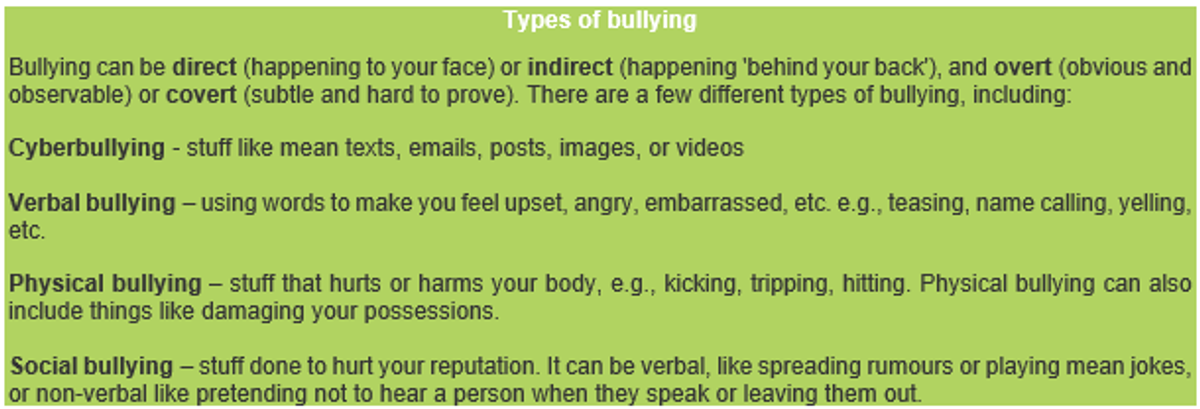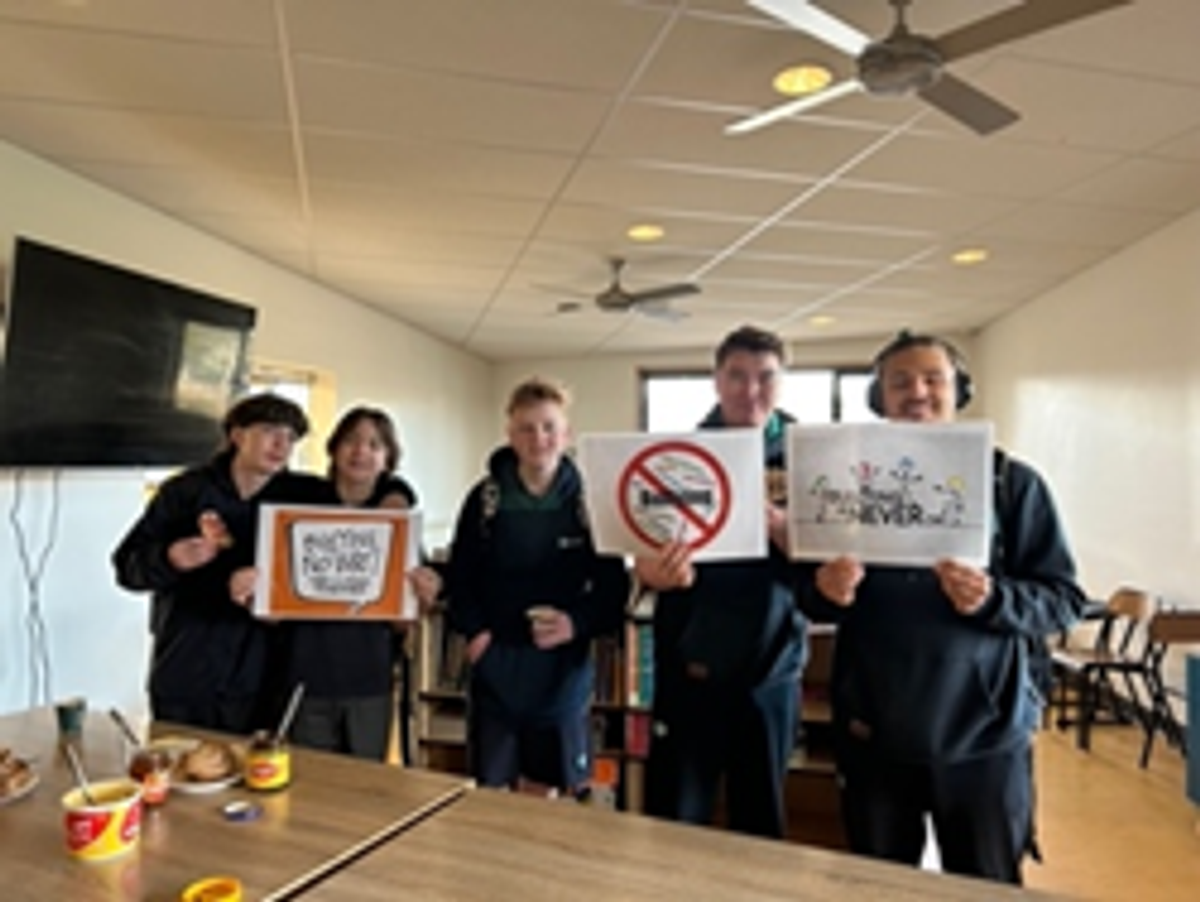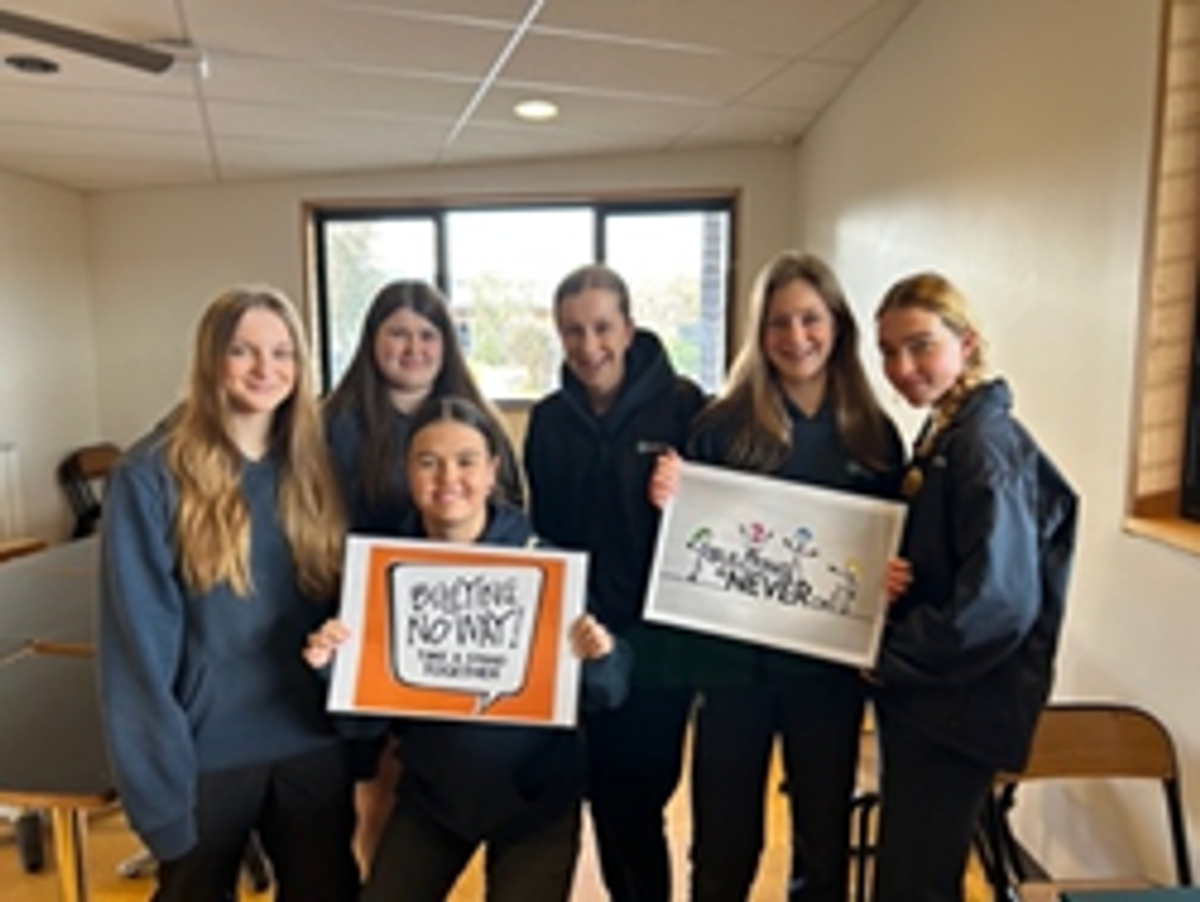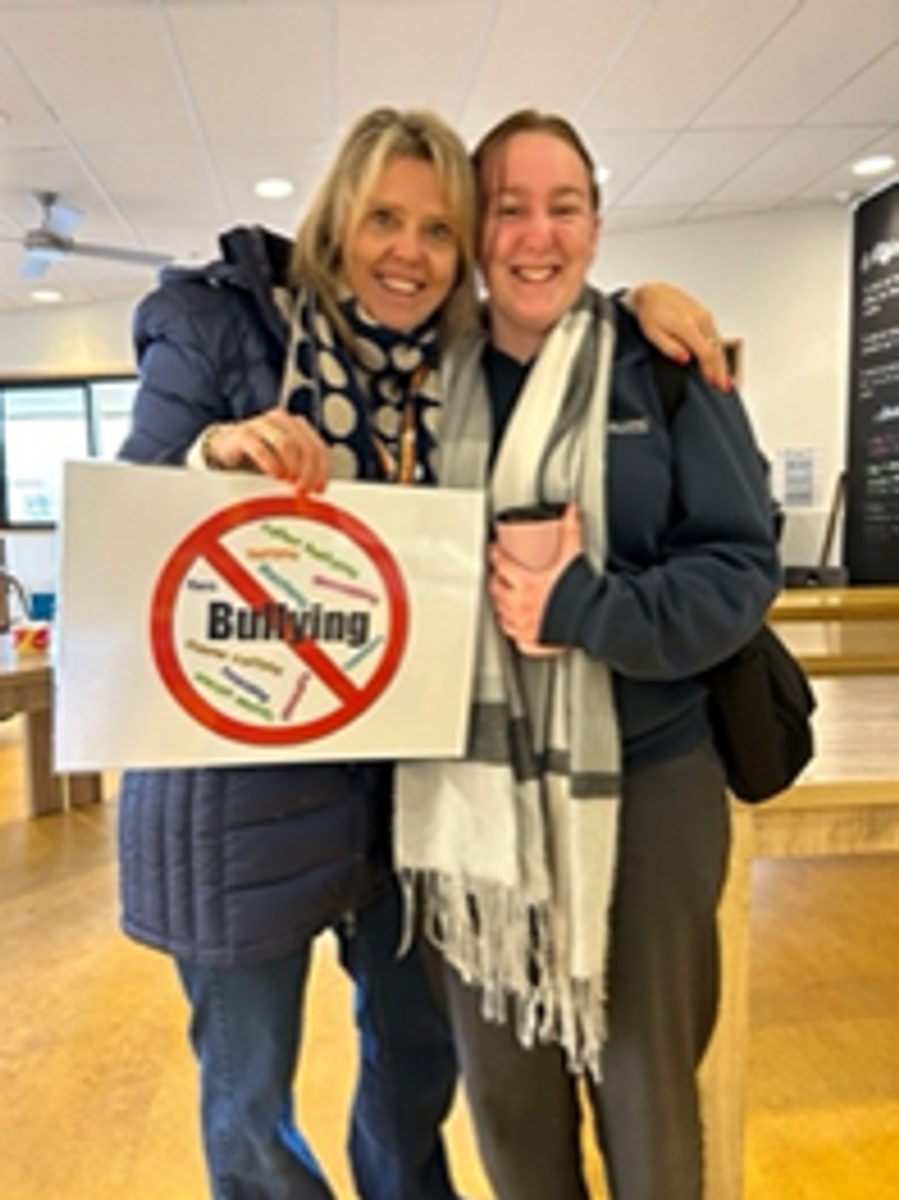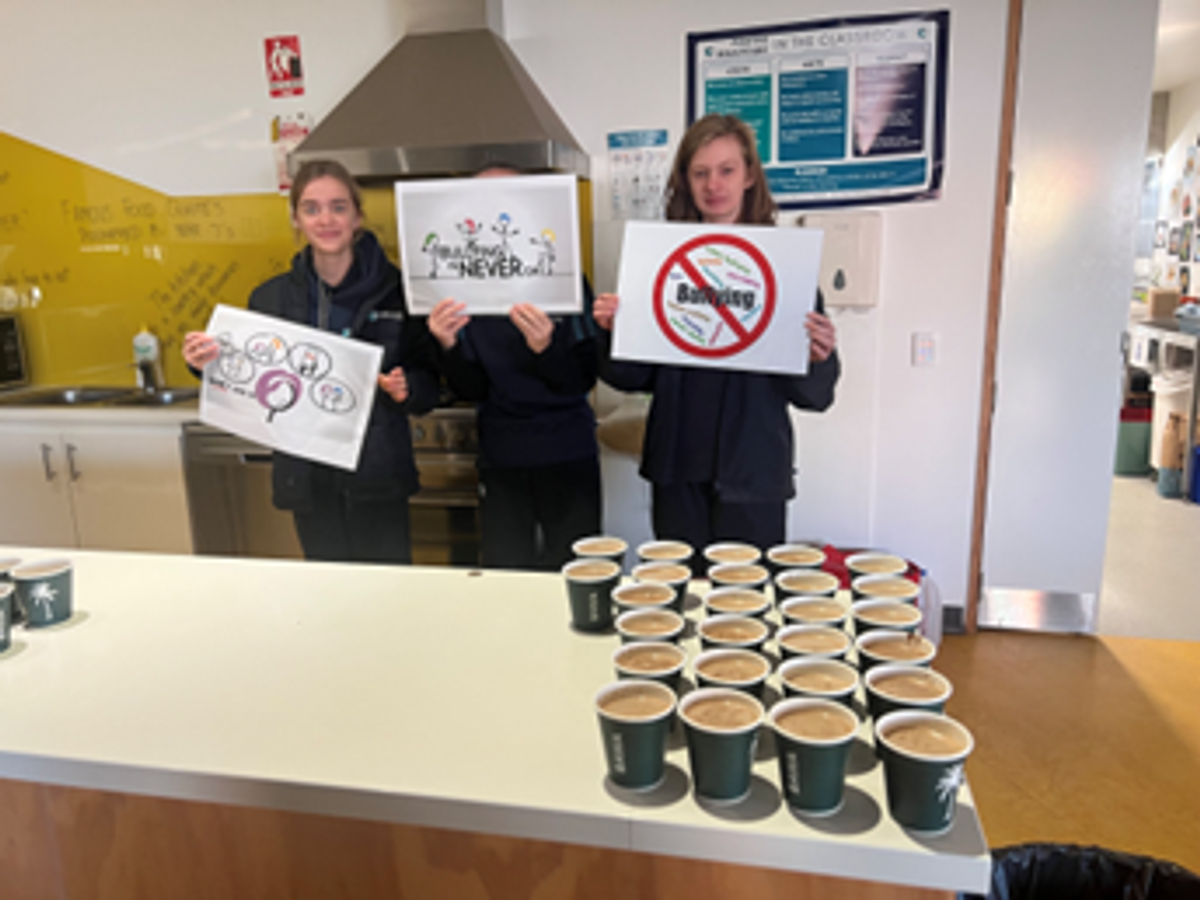SURFSUP WITH THE WELLBEING TEAM
We have passed the halfway mark of term 3 and the weather is finally starting to get warmer, and the spring blossom and wattle trees are appearing around our community. We welcome Sarah our new Mental Health Practitioner to the wellbeing team this week- we are excited to have her start and know the students will feel well supported by her.
On Friday 18th August – National Day of Action Against Bullying – the school community came together with evidence-informed resources and activities for a proactive approach to bullying prevention and education. It began at breakfast club with students taking a pledge to not accept in our community any forms of bullying.
This newsletter will look at some new resources available for parents on how to notice and speak with their young person around the signs and ways students may present when faced with repeated unwanted behaviours towards them. Please encourage your young person to reach out to teachers or wellbeing if they are experiencing any of the following feelings.
What is bullying?
Sometimes, people get confused about what is and isn’t bullying.
People can think that someone saying something they don’t like is bullying – but it’s not. Bullying is different from conflict or unkindness.
Bullying is mean, but being mean doesn't always mean bullying.
Bullying behaviours:
- Are aggressive, unkind or mean behaviours
- Are repeated behaviours (it must happen multiple times, in an ongoing way to be defined as bullying)
- Happen on purpose
- Must have a power imbalance – which means that people bullying and the people being bullied aren’t seen as being ‘equal’, e.g. older, bigger people picking on smaller, younger people, or ‘popular’ people targeting someone who they see as being ‘unpopular’, or who is struggling to make friends.
Bullying is not the same as:
- Being rude – saying or doing something hurtful that wasn’t planned or meant to hurt someone, e.g. someone pushing in front of you in the canteen line
- Being mean – doing something hurtful to someone on purpose once or twice, e.g. a friend refusing to play with you one day
- Conflict – having a disagreement with a friend, e.g. two friends getting into an argument and saying mean things to each other
- Respectful feedback on behaviours you're doing that aren’t ok, e.g. “It’s not ok roll your eyes every time they talk about sport.”
- A friend putting in a ‘boundary’ e.g. “I don't like it when you keep telling me what to do.”
- Natural consequences in socialising, e.g. a friend not trusting you because you shared their secret
Signs of bullying
Each individual student who has been bullied or is bullying others will respond and act differently. A student's behaviours and moods can also change for a variety of reasons.
However, the following are some signs that may indicate a student is experiencing bullying:
- becomes aggressive and unreasonable
- starts getting into fights
- refuses to talk about what is wrong
- school grades begin to fall.
Sometimes bullying can be less obvious. Signs can include:
- student is often alone or excluded from friendship groups at school
- student is a frequent target for teasing, mimicking or ridicule at school
- change in the student's ability or willingness to speak up in class and appears insecure or frightened.
Signs a parent may report:
- student doesn't want to go to school
- changes their method or route to school or are frightened of walking to school
- changes in sleep patterns
- changes in eating patterns
- frequent tears, anger, mood swings
- unexplained bruises, cuts, scratches
- missing or damaged belongings or clothes
- arriving home hungry.
Students who are more likely to be bullied are also more likely to:
- feel disconnected from school and not like school
- lack quality friendships at school
- display high levels of emotionality that indicate vulnerability and low levels of resilience
- be less well accepted by peers, avoid conflict and be socially withdrawn
- have low self-esteem
- be relatively non-assertive
- be different in some way.
A student who bullies may:
- repeatedly tease, imitate or make fun of the same targets
- feel the need to dominate or control others
- show no compassion for someone who's experiencing bullying
- repeatedly exclude or ignore the same target
- whisper behind their backs on a frequent basis.
- Students who frequently bully others are more likely to:
- feel disconnected from school and dislike school
- demonstrate good leadership skills
- demonstrate good verbal skills and ability to talk themselves out of trouble.
How should I respond to bullying?
Because bullying is repetitive (it happens over and over again), you can plan what you might say or do next time it happens. Below are some examples of things you can try, which have worked for other people. Before trying we recommend planning things you could say or do with a professional support like a Kids Helpline counsellor or a teacher.
- Call it out, e.g. Frown and say, "Oh wow, that was actually really mean!"
- Pretend to agree with them (to show you don't really care), e.g. "You're right, I am a loser. Thanks for being so open and honest with me."
- Act unbothered, like you don't care, e.g. "Nice insult. A bit unoriginal though - I give it 3 stars out of 5. Better luck next time."
- Use humour (if appropriate), e.g. Laugh, and say: "Haha, good one. I would insult you back, but I am not sure that you would get it."
- Pretend you don't understand the insult and make them explain it to you - this works well for more subtle insults or when people act like, 'It was just a joke; lighten up'. e.g. "I don't get it. Explain it to me?"
- Directly ask someone to intervene or help, eg. "Jordan, back me up here!"
Be an upstander!
When you see bullying happening to someone else, you become a ‘bystander’. You can help stop bulling from happening by:
- Show you disapprove, e.g. frowning at a mean joke, shake your head to show you don’t think it’s right
- Interrupt the bullying by talking to the person being bullied, e.g. “Hey Jack, there you are!”
- Give the person being bullied an excuse to leave the situation. e.g. “The teacher is looking for you” or, “Hey, can you come help me with something for a minute?”
- Let the person being bullied know that you saw the bullying, you don’t agree with it and offer support; do this in private/once the person is safe from the situation. e.g. “I saw what was happening at lunchtime. It is not okay for them to act that way! Are you ok? How can I help?”
- Report it to trustworthy adults, such as a teacher, parent or Kids Helpline. If possible, report it together - being bullied can be very lonely. Having a friend through a tough time can make a big difference to someone being bullied.
https://kidshelpline.com.au/teens/issues/bullying
https://headspace.org.au/explore-topics/for-young-people/bullying/
https://headspace.org.au/explore-topics/supporting-a-young-person/bullying/
https://bullyingnoway.gov.au/
As always reach out if you need further support – The Wellbeing Team Michelle, Mel, Jas, Sarah and Rachel.
Accessing Wellbeing
Students can access wellbeing via an online booking form for Wellbeing and health related matters.
Student Wellbeing Check In Request Form
Parents/ carers can access supports from Wellbeing for their young person via the Administration Office.
Mate Space / Headspace
Headspace Geelong has been hosting Mate Space sessions in Torquay.
These male only sessions are held inside the Youth Centre at KMCC and runs from 4pm-6pm.





